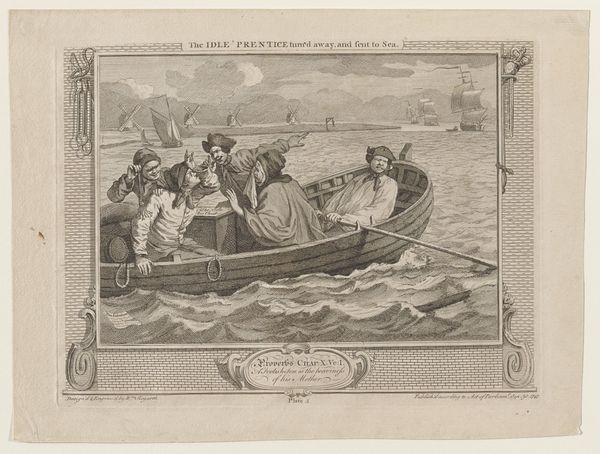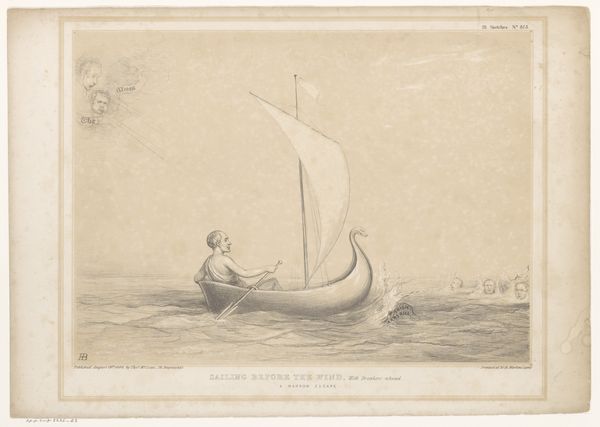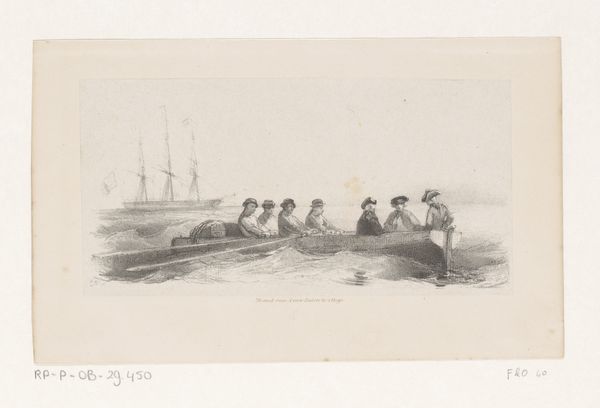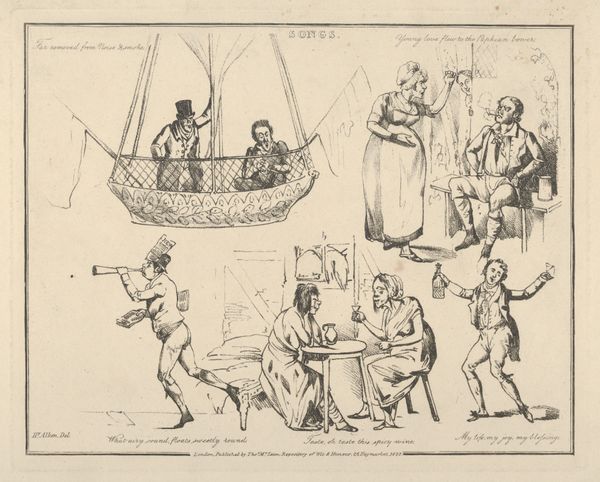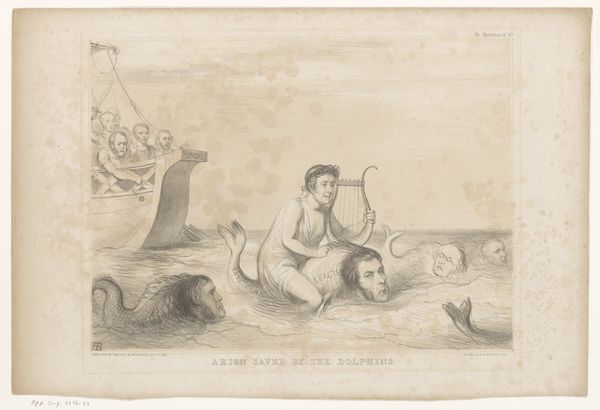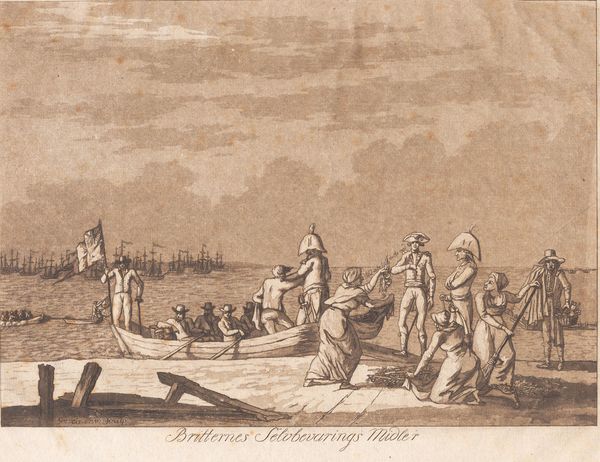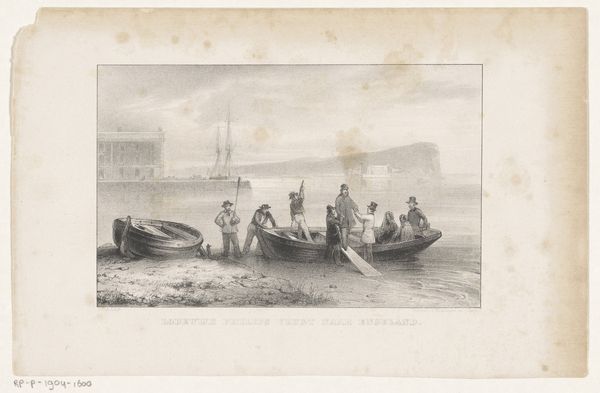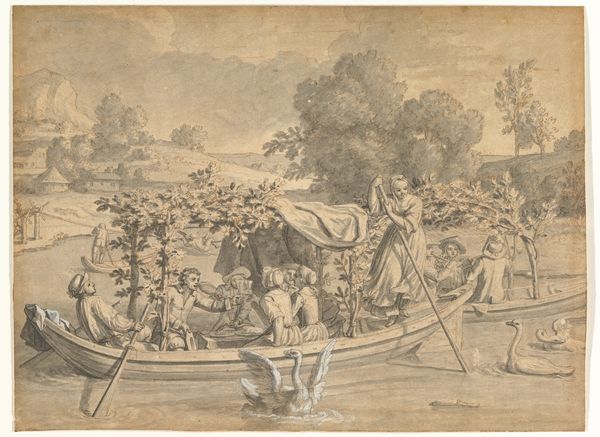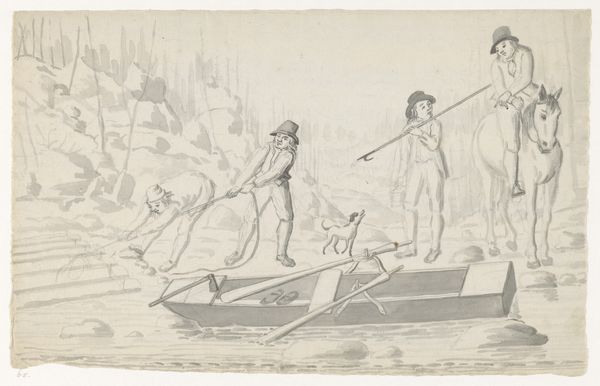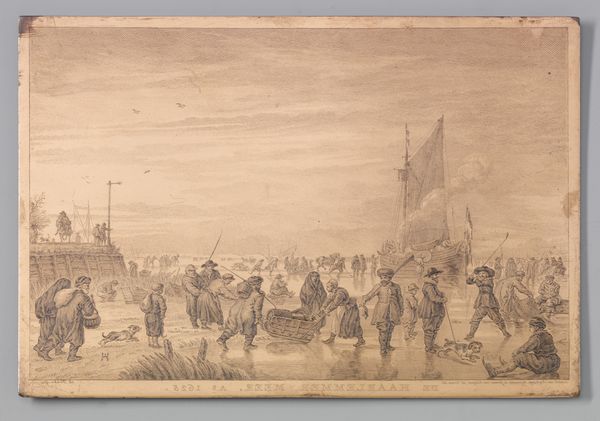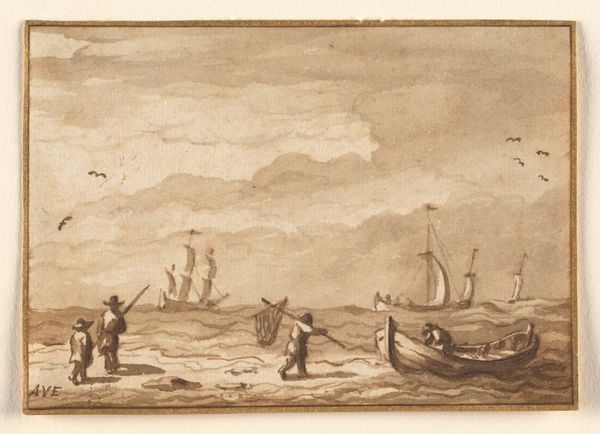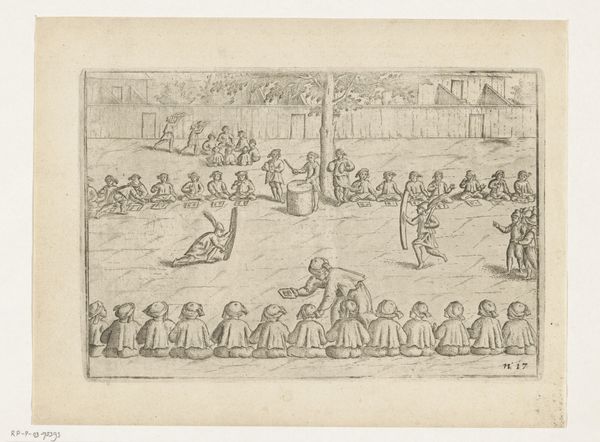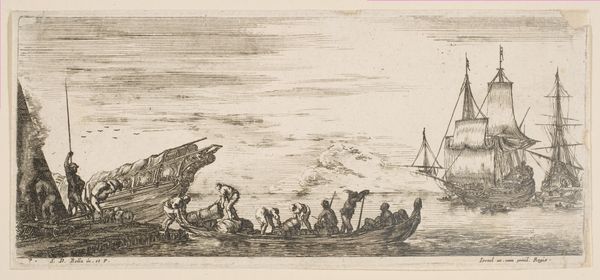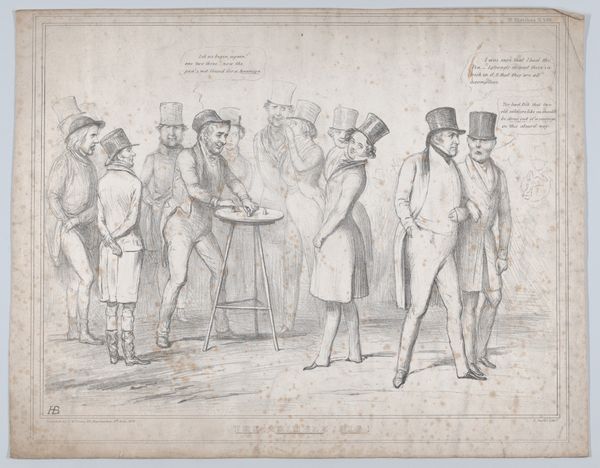
drawing, print
#
drawing
# print
#
caricature
#
line
#
genre-painting
#
history-painting
Dimensions: Sheet: 11 3/4 × 17 1/2 in. (29.9 × 44.5 cm)
Copyright: Public Domain
Curator: John Doyle created this print, “Unhappy Ghosts Crossing the Styx: In Base-relief” in 1834, currently held in the collection of the Metropolitan Museum of Art. Editor: My first thought is how sculptural it looks! Like a low-relief carving rendered with graphite. The stark white figures against the muted background really emphasizes that effect. Curator: Indeed. Doyle, working with drawing and printmaking techniques, effectively imitates classical bas-relief sculpture in a flat medium. It challenges the hierarchy, right? Taking something associated with monumental sculpture and reproducing it through arguably more accessible, reproducible means. Think about the implications for viewership and access to culture. Editor: The symbolic language here is intriguing. We have Charon ferrying souls across the River Styx into the underworld – a classic image. But these aren’t generalized souls, are they? Each figure seems individualized, carrying specific objects and burdens. There’s a suggestion of satire there. Curator: Precisely! The social context is crucial. It’s believed these "unhappy ghosts" represent prominent political figures of the time. By drawing them in this classical scene, Doyle is offering commentary on their actions and failures, essentially consigning them to a kind of political afterlife of shame. The print is meant to be reproduced, sold, disseminated - inviting widespread consumption of a pointed political critique. Editor: It becomes a form of cultural memory-making, doesn’t it? Attaching specific faces and stories to a universally recognized image of judgment. The choice to present them as "unhappy" is very clever – hinting at a collective guilt or regret. Curator: The visual joke wouldn't land if viewers didn't get that it's classical relief, cleverly transposed through graphic, reproductive means. Editor: A blending of high and low art, classic myth meets current events through, as you said, easily distributed print, meant for the masses. Curator: Exactly. Doyle’s clever fusion of media, labor, myth, and political critique shows us how materials themselves and forms could embody commentary. Editor: It leaves you wondering about the long-term power of images, the resonance of those archetypes we keep returning to, across centuries.
Comments
No comments
Be the first to comment and join the conversation on the ultimate creative platform.
